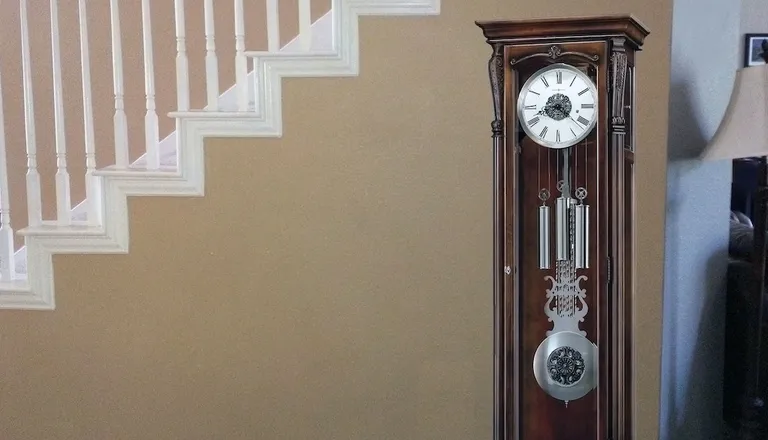A grandfather clock is a nutritious and precious item in most homes, which tends to go from generation to generation. These royal timpis, with their long pendulum-driven movements, are both lovely and sentimental. But when it is time to relocate a grandfather watch – whether you are moving to a new home or just needs to rearrange your living room again – it must be treated with care. The grandfather clock to relocate the clock and your house to relocate to the grandfather clock needs precise planning and proper technique.
Why Is Moving a Grandfather Clock So Tricky?
Dada clocks are heavy, fragile, and usually intricate, so they are much harder to continue than regular furniture. Their extended pendulums, fragile glass parts, and intricate mechanisms must be well taken care of to prevent damage. If mishandled, the mechanism of a clock can be interpreted wrongly, or worse still, the clock can break. Unless you do it according to the proper procedure, the likelihood of cracking wooden work or detaching its internal components is high.
To assist in a smooth and secure transfer, it is wise to take time to learn the steps required. Some might want to employ a professional grandfather clock moving company, but if you are determined to move the watch yourself, it is essential to be careful and thorough.
Step-by-Step Guide to Moving a Grandfather Clock
1. Get the clock ready to walk
It should be prepared well before you consider lifting or moving the clock.
Take out pendulum and weight: The pendulum is fragile and should be taken out at this stage to prevent any swinging or damage. Most grandfather watches also have a removable weight. Take out these parts carefully and pack them separately in soft cloth or bubble rap to avoid damage.
Cover the clock face: Most watches possess glass faces, so be careful not to break them while covering them. Place the clock face with painter tape or masking tape covered, thereby creating a protective shield so that no breakage occurs. Also ensure the clock hands are secure so they do not get moved or bent.
Remove the clock mechanism: If you know the inner workings of the clock, it is best to remove any running parts or curved mechanisms. It prevents internal gear damage during any unknown winding winding or during this process.
2. Safeguard the clock
After you remove the pendulum and weight, the time has arrived to safeguard the remaining watch for shipping.
Cover the clock with a moving blanket: drape a thick moving blanket over the clock, making sure that all surfaces are covered. It will protect the wood, glass and other delicate parts of the clock from scratching, dent or any other type of damage. Make sure the blanket is safe, and consider using packing tape to keep it.
Use strong boxes or crates: If possible, place the clock in a large moving box or custom crate. This will provide additional protection and prevent the clock from walking during transport.
3. Clock
Grandpa watches can weigh anywhere from 50 to 200 pounds depending on their size and materials. When lifting the clock, use appropriate techniques to avoid injury.
Have assistance: Because the clock is so heavy and fragile, it’s always better to be at least someone else to assist in lifting the clock. Never attempt to push it towards you, since it may topple or injure you.
Lift from underneath: Lift the base when lifting the clock, keeping the clock stable and straight. Do not lift the clock by top or fragile points such as the clock face or sides, which can result in damage.
Removing the clock: Some individuals want to remove the clock straightaway, while others might prefer removing the grandfather watch. If you decide to have it removed this way, remember to keep it as a foamy blanket or a padded one on a cushioned surface. This will preserve the watch from pressure or influence.
4. Clock transport
After the clock is securely packed and ready, it is now time to move the clock. Employ a moving truck that has ample space such that the clock is deployed safely and won’t move around during transportation. If possible, travel with the clock upright during transportation to minimize the movement.
5. Unpacking the clock at your new location
Upon arrival at your new location, it is now time to restore the clock. In order to divide it, undo the steps you take in reverse. Hold the pendulum and hold the weight back to your original positions and ensure that everything is level. If you are not sure, get a professional to set the clock and make sure to work correctly.
Should You Hire a Professional?
If you are uneasy by any means or do not wish to risk damaging your watch, then it is always a great idea to have a professional grandfather watching service. These professionals have a background of dealing with fragile, heavy watches and can guarantee that everything is done right, from packing and shipping to installation in your new home.
A professional clock-moving business will possess necessary equipment like padding, strap and custom crates to move their grandfather watch safely. They can also perform any internal adjustment necessary to make sure that the clock is running properly after this process.
Conclusion
To relocate a grandfather clock, expansion needs careful attention to a firm hand. Whether you are doing this step yourself or hiring a professional service, following the proper steps will help to ensure that your clock safely arrives at your destination. Always opt for preparations, safety and safety to avoid any costly blunders. With the proper approach, your fed grandfather watch will keep ticking for generations to come.
FAQS:
1. How do I prepare a grandfather clock to move forward?
To prepare to move your grandfather clock, first remove the pendulum and weight, then secure the clock face with tape to prevent damage. If possible, it is also intelligent to remove the clock mechanism and cover the clock with a thick moving blanket for additional protection.
2. Is it safe to take a grandfather watch by himself?
Given the weight and delicateness of the grandfather watches, it is best to help you when lifting and moving them it at least one person. Always lift from the base to avoid damage and injury.
3. Should I appoint a professional to move my grandfather’s watch?
If you are uncertain about moving the clock yourself, it is a great option to hire a professional moving service. These experts have the right tools and experiences to handle delicate watches and can ensure that it is taken safely and set to the new place correctly.
4. How do I install my grandfather clock after transferring it?
After transporting the clock, restore the pendulum and weight, ensure that there is a clock level, and make no necessary adjustment to the mechanism. If you are not convinced in installing it yourself, then consider hiring a professional to ensure that it is running properly.






